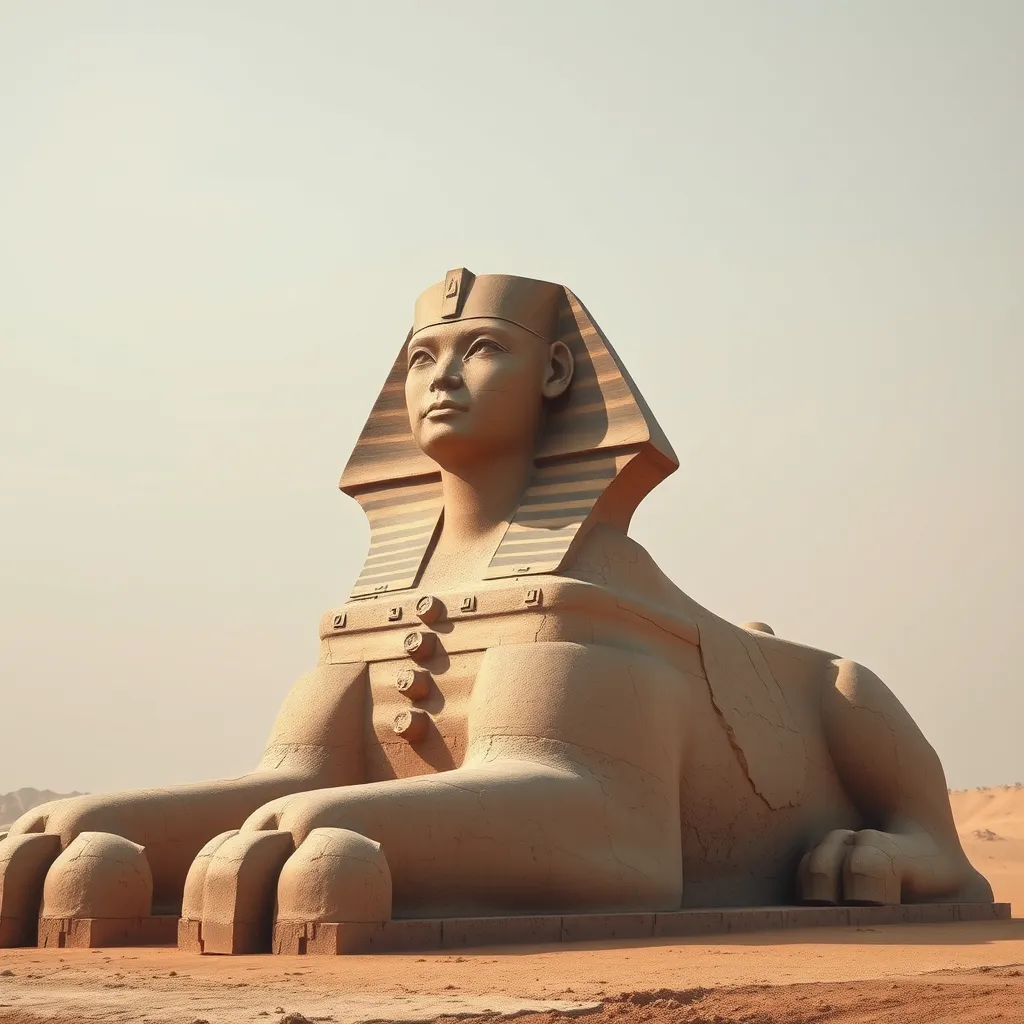The Sphinx as a Symbol of Wisdom and Knowledge
I. Introduction
The Sphinx, an iconic figure of ancient mythology, is often defined as a creature with the body of a lion and the head of a human. This majestic figure has captivated the imaginations of many across cultures and eras. Historically, the Sphinx is most notably represented by the Great Sphinx of Giza, a monumental statue that stands as a testament to the architectural prowess of ancient Egypt.
Its historical and cultural significance extends beyond mere aesthetics; the Sphinx embodies profound themes of wisdom and knowledge, serving as a guardian of secrets and a challenger of intellect. The purpose of this article is to explore the multifaceted role of the Sphinx as a symbol of wisdom and knowledge throughout history and its relevance in contemporary society.
II. Historical Context of the Sphinx
The origins of the Sphinx can be traced back to ancient Egypt, where it emerged as a significant symbol in both art and architecture. The Great Sphinx of Giza, constructed during the reign of Pharaoh Khafre around 2500 BCE, exemplifies the grandeur of this mythical creature. Its massive scale and intricate details reflect the advanced understanding of engineering and artistry that characterized this civilization.
Architecturally, the Sphinx has inspired numerous representations in various forms of art, including sculptures, paintings, and reliefs. In ancient mythology and literature, the Sphinx is often depicted as a guardian of important knowledge, posing riddles that challenge the intellect of those who seek to pass.
III. The Sphinx in Egyptian Culture
Within Egyptian culture, the Sphinx held immense importance in religious beliefs and practices. It was often associated with the sun god Ra and represented the fusion of human intellect and animal strength. This duality made the Sphinx a powerful symbol of protection and wisdom.
The symbolism associated with the Sphinx in Egyptian art is profound. It often appears in funerary contexts, symbolizing the protection of the deceased and their journey to the afterlife. Additionally, the Sphinx’s connection to Pharaohs underscores its role as a representation of divine authority, embodying the pharaoh’s wisdom and power.
IV. The Sphinx as a Guardian of Knowledge
The Sphinx’s role in riddles and challenges is perhaps one of its most famous attributes. In Greek mythology, the Sphinx posed a riddle to travelers approaching Thebes, asking, What walks on four legs in the morning, two legs at noon, and three legs in the evening? This riddle symbolizes the journey of life and the pursuit of knowledge, representing the challenges one must face in seeking understanding.
The symbolism of the Sphinx extends to protection and wisdom. It stands as a sentinel of knowledge, guarding sacred truths from those who are unworthy. This archetype can be compared to guardian figures in other cultures, such as the griffin in Greek mythology or the dragons in Chinese tradition, all symbolizing the safeguarding of knowledge and power.
V. The Sphinx in Philosophy and Ethics
The Sphinx’s representation in philosophical discourse is significant. It often serves as a metaphor for the complexities of knowledge and the ethical dilemmas faced in the pursuit of truth. The challenges presented by the Sphinx’s riddles encourage critical thinking and reflection.
Lessons learned from the Sphinx’s riddles highlight the importance of introspection and the pursuit of wisdom. The metaphor of the Sphinx encourages individuals to confront their own ignorance and seek deeper understanding, making it a powerful symbol in philosophical discussions.
VI. Modern Interpretations of the Sphinx
In contemporary art and literature, the Sphinx has evolved into a symbol of mystery and enigma. Artists and writers often draw inspiration from the Sphinx to explore themes of knowledge, power, and the unknown. Its image is frequently used to evoke a sense of wonder and curiosity.
Moreover, the Sphinx has found its place in popular culture, appearing in films, books, and video games as a representation of wisdom and challenge. This reinterpretation underscores the Sphinx’s ongoing relevance in modern thought, as it continues to inspire discussions about knowledge and the human experience.
VII. The Sphinx’s Influence on Education and Learning
The Sphinx serves as a potent symbol in educational institutions, often representing the quest for knowledge and the importance of critical thinking. Many schools and universities incorporate the image of the Sphinx in their emblems to signify their commitment to academic excellence.
Furthermore, the Sphinx promotes critical thinking and inquiry among students. By embodying the challenges of knowledge acquisition, it encourages learners to question, explore, and seek answers. In motivational contexts, the Sphinx symbolizes the journey toward enlightenment and the intellectual challenges that must be overcome.
VIII. Conclusion
In summary, the Sphinx has emerged as a significant symbol of wisdom and knowledge throughout history. Its architectural grandeur, cultural significance, and philosophical implications highlight its enduring legacy. The Sphinx not only represents the quest for knowledge but also serves as a guardian of the truths that lie beyond the surface.
Reflecting on the Sphinx’s impact, it is clear that wisdom and knowledge remain paramount in society. As we continue to navigate the complexities of the modern world, the lessons embodied by the Sphinx remind us of the importance of seeking understanding and striving for enlightenment.
